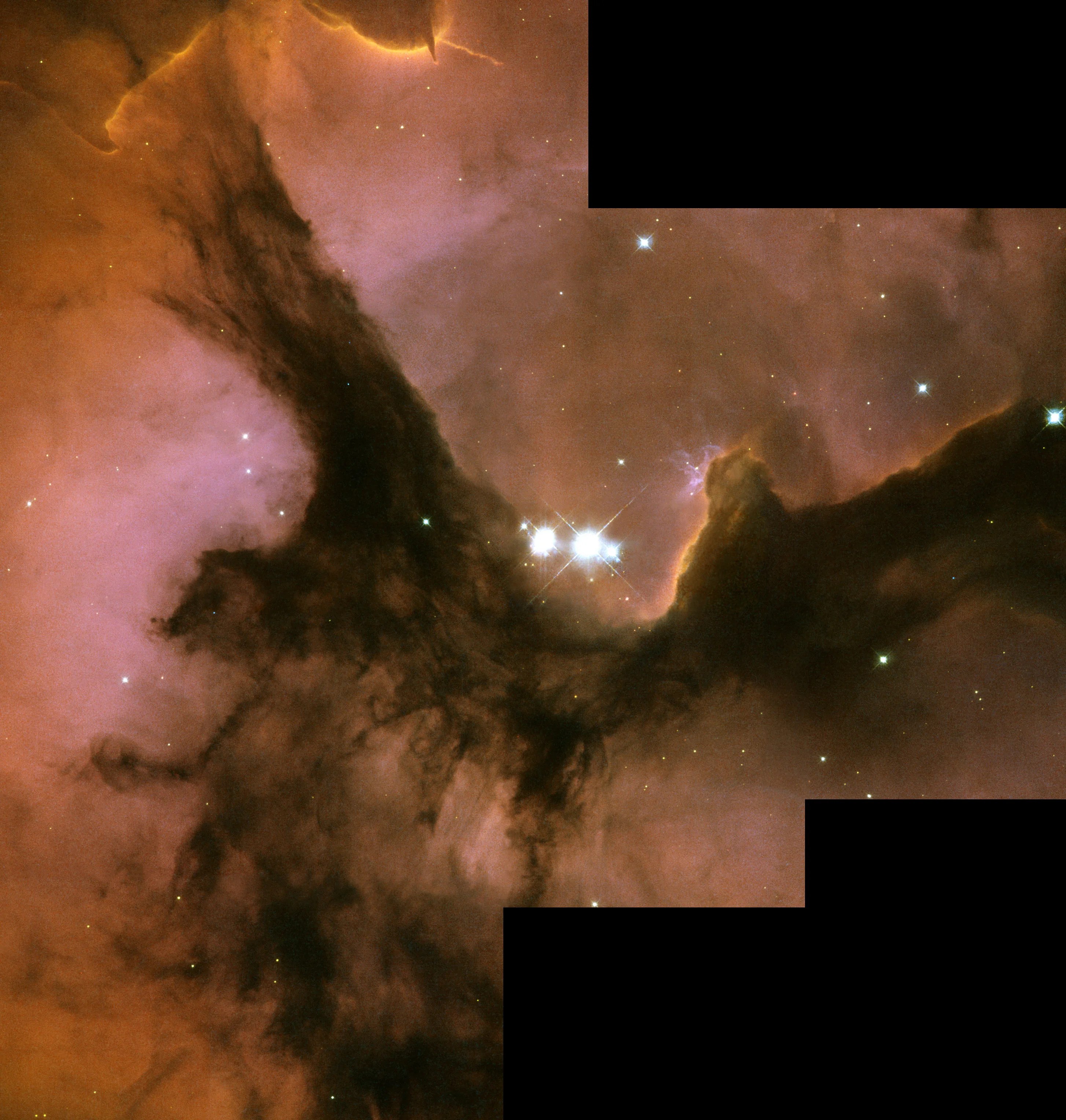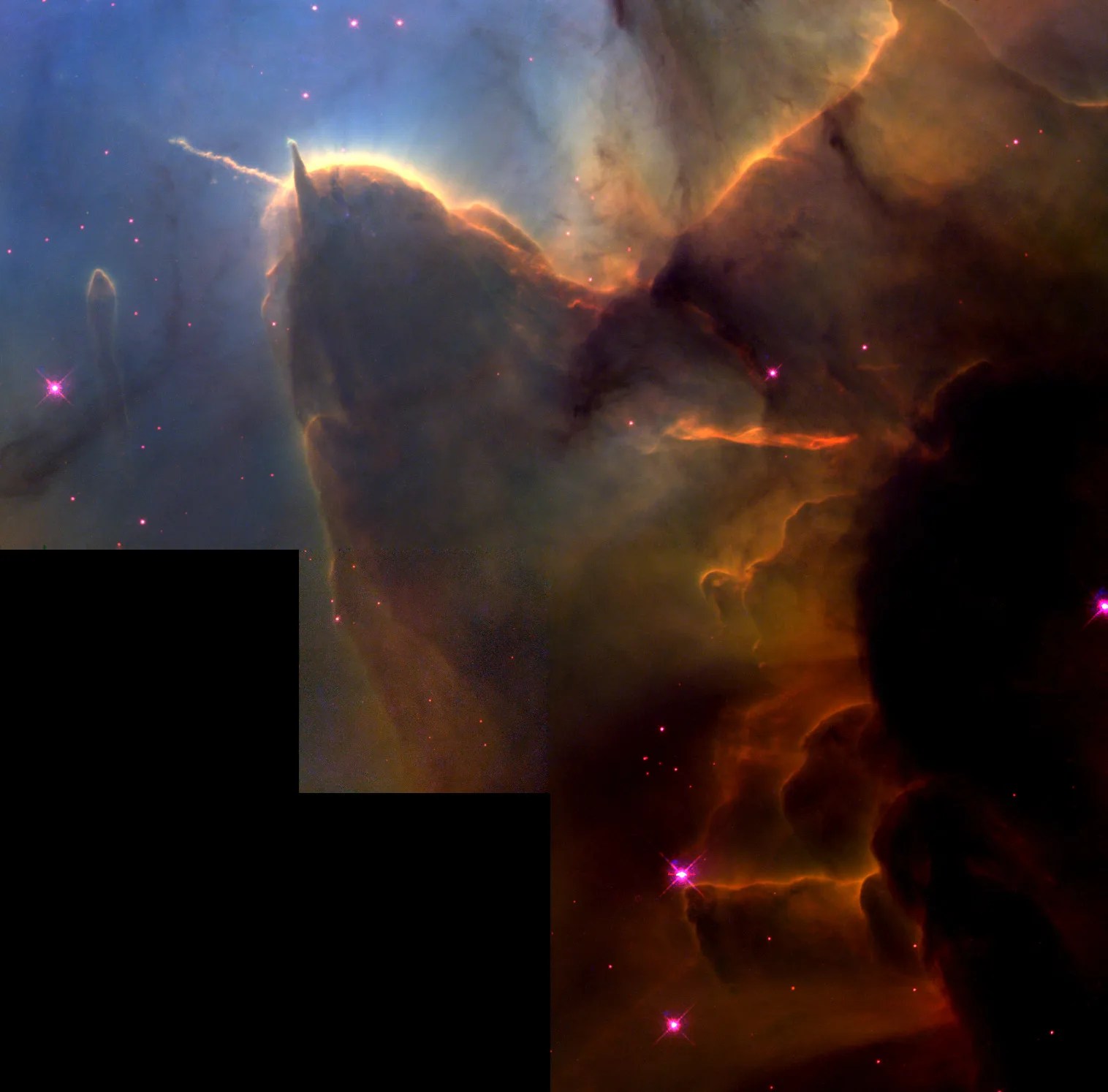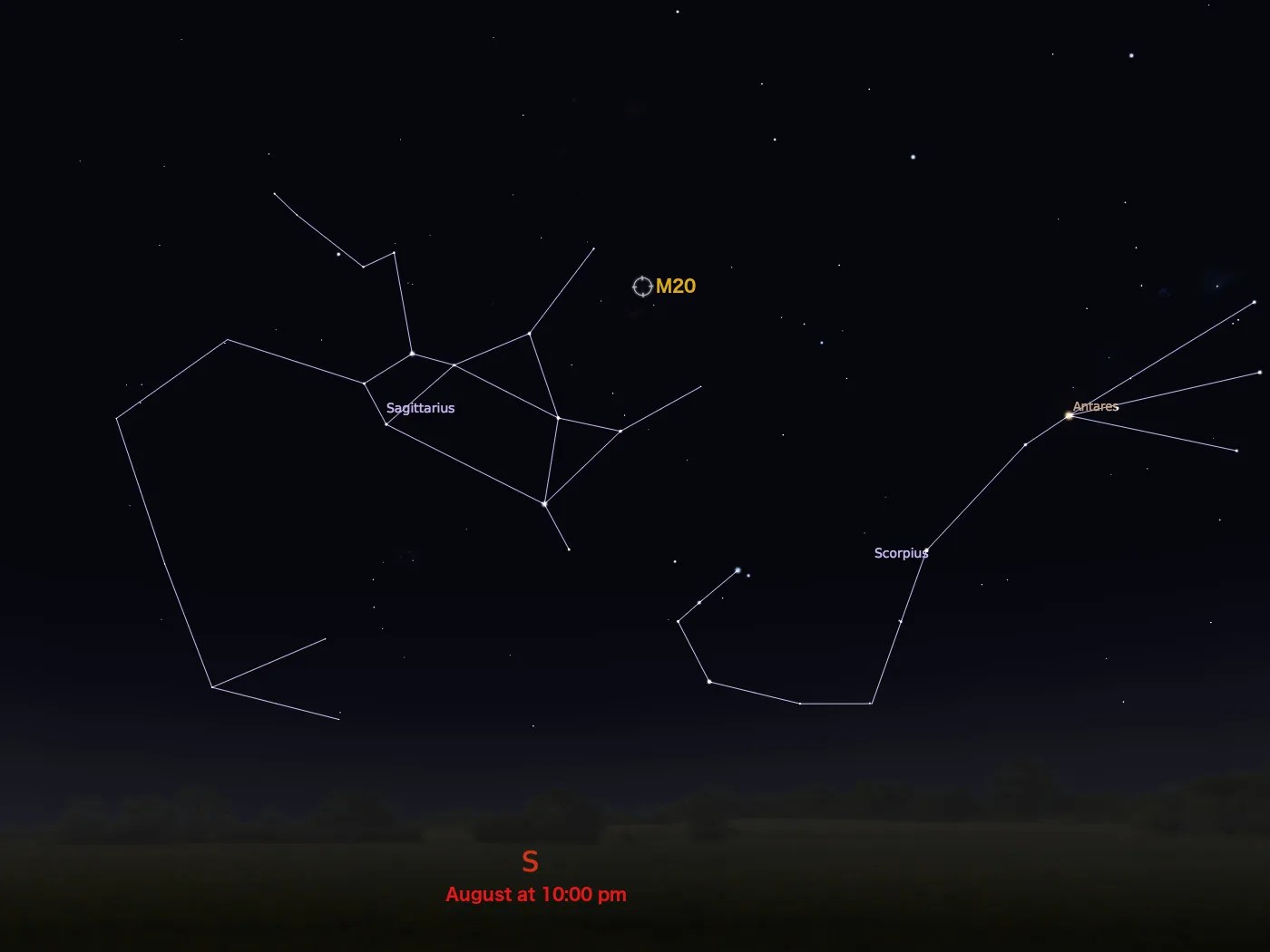Messier 20
Look for Messier 20, better known as the Trifid Nebula, in August.
Distance
9,000 light-years
Apparent Magnitude
6.3
constellation
Sagittarius
object type
Nebula

Discovered by Charles Messier in 1764, M20 is a star-forming nebula located 9,000 light-years away from Earth in the constellation Sagittarius. Also known as the Trifid Nebula, M20 has an apparent magnitude of 6.3 and can be spotted with a small telescope. It is best observed during August.

This eerie Hubble image features the center of the Trifid Nebula and the three wing-like bands of thick dust for which the nebula was named. A group of recently formed, massive, bright stars toward the center of the nebula is easily visible. These stars are releasing a flood of ultraviolet radiation that dramatically influences the structure and evolution of the surrounding nebula. Star formation is no longer occurring in the immediate vicinity of this group of bright stars because their intense radiation has blown away the gas and dust from which new stars are made.
The image’s stair-step appearance results from the design of the camera used to take the exposures. The camera consisted of four light detectors, one of which provided a higher resolution but had a smaller field of view than the other three. Because the detector with the higher resolution did not cover as much area as the others, black regions were left when the images from all four detectors were combined into one picture.
This Hubble image of M20 has been colorized to indicate the presence of oxygen, sulfur and hydrogen.
NASA, Z. Levay and L. Barranger (STScI)
For more information about Hubble’s observations of M20, see:

Explore Hubble's Messier Catalog
The following pages contain some of Hubble’s best images of Messier objects.

Messier 1 (The Crab Nebula)
Better known as the Crab Nebula, Charles Messier originally mistook Messier 1 for Halley’s Comet, which inspired him to create…

Messier 2
Hubble's image of Messier 2 is comprised of visible and infrared wavelengths of light.

Messier 3
Messier 3 holds more than 500,000 stars.




